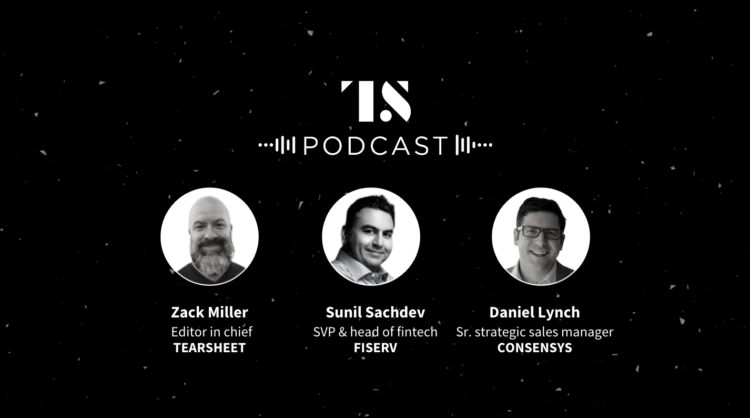Blockchain and Crypto, Partner, Podcasts
Building bridges between fintech and Web3 with Fiserv and ConsenSys
- SVP and head of fintech at Fiserv, Sunil Sachdev, and senior strategic sales manager at ConsenSys, Daniel Lynch, join us on the Tearsheet Podcast.
- Listen to our conversation about how a Fiserv and ConsenSys collaboration could leverage Web3 technology to make open finance more inclusive and enhance customer experiences.










